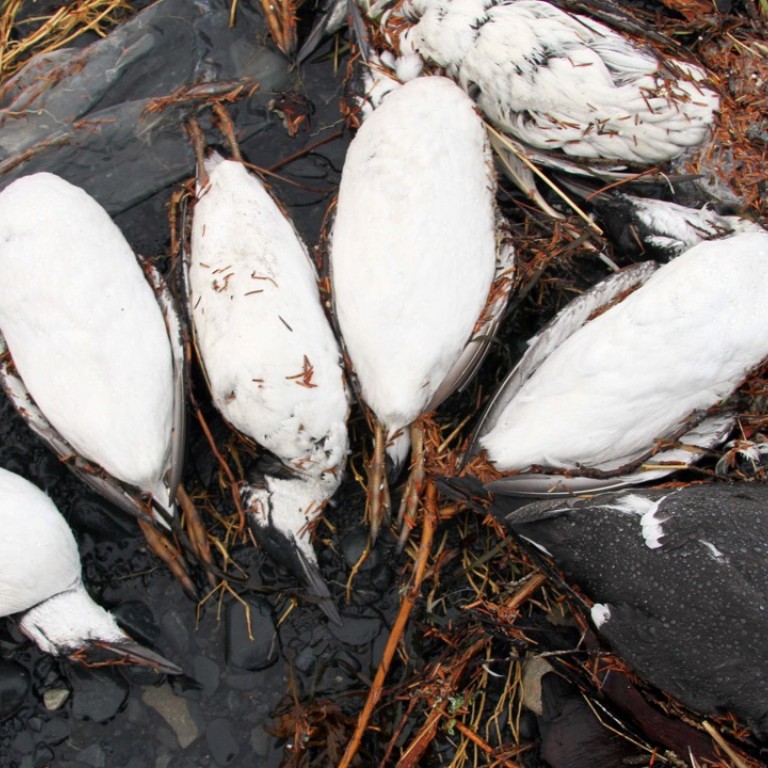
Mysterious death of thousands of Alaskan seabirds baffles scientists
Tens of thousands of dead birds are washing up on the beaches of Alaska’s Prince William Sound, an unexplained mass die-off that some experts say may be related to the changing climate.
The birds, all of a species known as the common murre, appear to have starved to death, federal wildlife officials say, suggesting disruptions to the supply of herring and other fish that make up the birds’ diet.
A survey by wildlife officials over the weekend counted more than 8,000 dead murres on the shores of one beach near Whittier, about 100km southeast of Anchorage. Local news video showed bodies of the black-and-white birds scattered on the beach and floating in the water offshore.
Even for a region that has seen die-offs of murres before, this event seems exceptional, local officials say.
“Scientists tend to get blasé about this, but this is bigger than I've ever seen,” David Irons, a biologist who recently retired from the US Fish and Wildlife Service’s migratory bird division, said in a video interview with KTVA-TV as he assisted with the bird count.
“Seabird biologists say seabirds are indicators of the health of the ecosystem. Now they're dying, and that is telling us something,” he said.
Wildlife officials say it’s not yet known why the birds are starving. One possible explanation is that the birds’ usual food supply - the schools of herring and other small fish usually found near the coast - have not materialised this year, perhaps because of changing climate or this year’s extreme El Nino weather pattern. While generally plentiful elsewhere in Alaska, herring populations have been depressed in the Prince William Sound, scene of the 1983 Exxon Valdez oil spill.
A 2008 scientific study co-authored by Irons found that mortality rates for the murre tend to increase in years when ocean temperatures are unusually warm.
Alaska is home to an estimated 2.8 million murres scattered among about 230 primary nesting grounds. Wildlife officials are continuing to investigate why so many are dying this year, starting with the attempt to document the scale of the die-off.
“If we don't record they're dying, it goes unnoticed,” Irons said.

